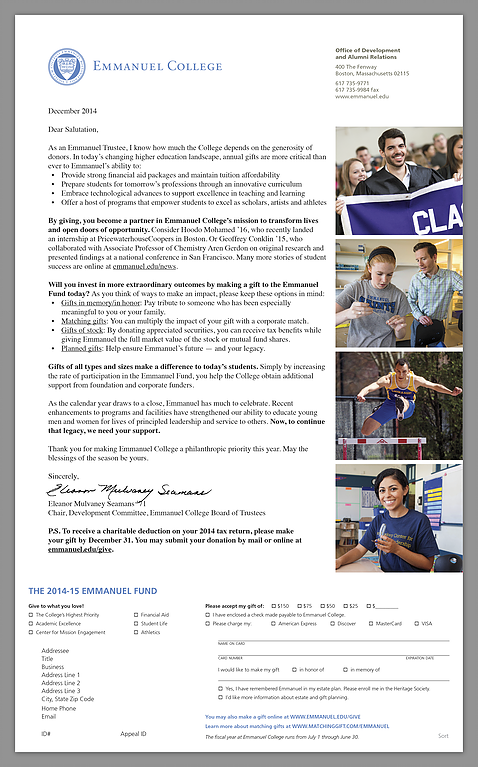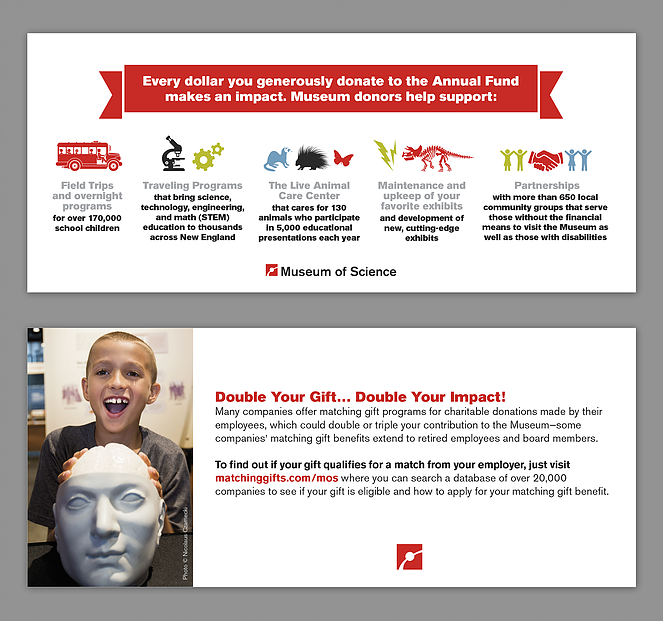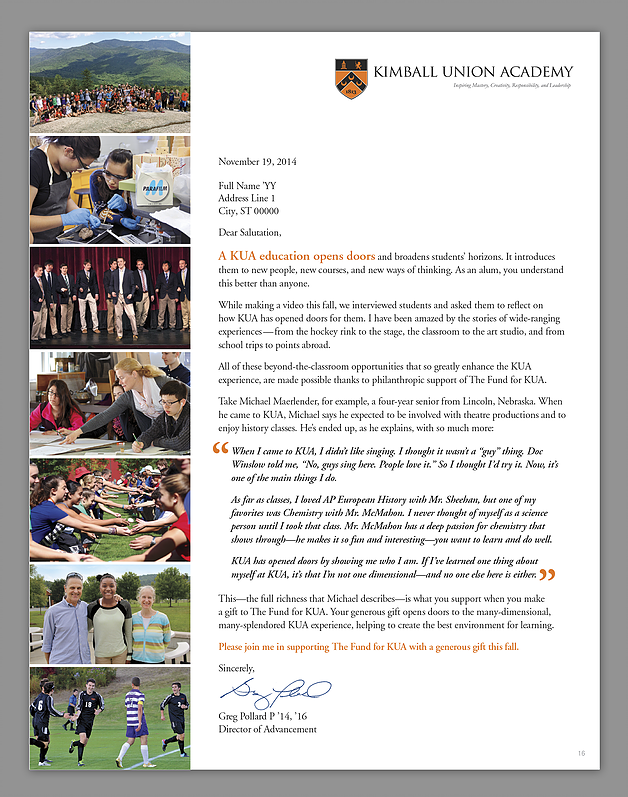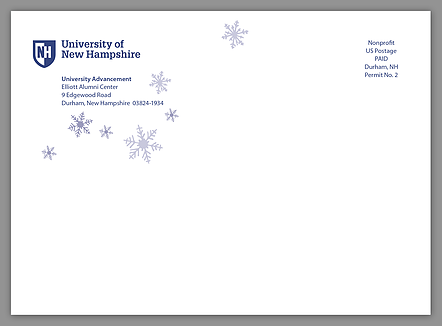Variable Data can help you in your efforts for fundraising this year. As a term used in printing or direct mail marketing, Variable Data Printing (VDP) allows you to send personalized imagery, content, or graphics. Today I am going to show you how variable data printing delivers more response for your next appeal.
What is Variable Data Printing for Fundraising?
Adding a person’s name, full-color image and more database information can increase the response rate by up to 500% vs not doing any of these things.
Connecting Donors Emotionally
Imagine you want to connect with your donors by including images from their time at their alma mater, but you have four decades of classes to cover. Variable Data Printing makes this possible by marketing to your donors one to one. Even though 20 versions of class representation may seem overwhelming, we help simplify the process so you don’t have to change anything about the way you send your data.
Check out this class year segmentation case study to learn how Dominican University of California increased dollars raised by 39%.
Why is Data so Important on Your Next Appeal?
You have loads of data that you collect year after year from your donors. Starting with Grandparents to alumni to parents; you have their giving history, the year of their graduation, and their interests while at your institution.
Personalizing a piece with imagery of the sport they played, or organizations they were in, sparks emotion when used on an outer envelope or on a self-mailer. Creating that emotion drives more opportunities for you to make that one-to-one connection with the donor.
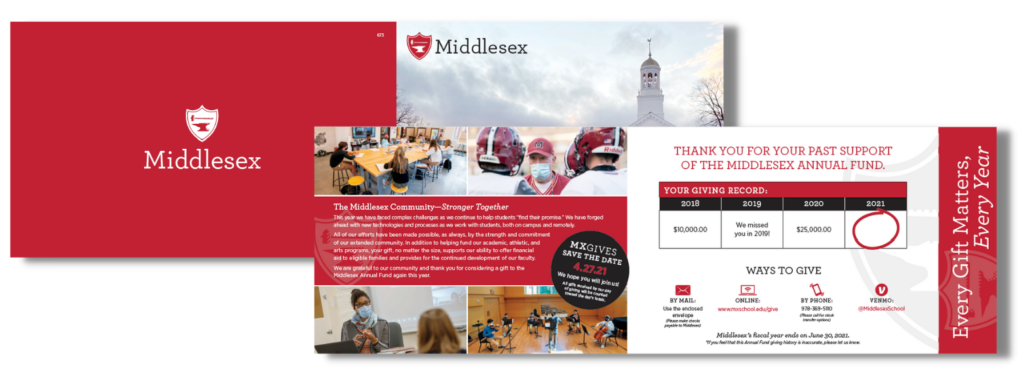
Another way to make a connection is through showcasing donor history. The “Ugly Betty” invoice-like direct mail piece is a great example. This mail design gets really personal when they see their financial commitments, or lack thereof.
Where Can You Use Variable Data Printing?
VDP works very well with most direct mail formats that are easily customized.
- Postcards
- Envelopes
- Folded Self-Mailers
- Brochures
These popular formats can engage donors when they use VDP, as noted before, to capture attention and emit emotion.
Potentially, nearly every component of a direct mail piece receives personalization, like letters, headlines and subheads, body copy, inserts, images, graphic charts, and donor history. Anywhere there is a data point that sets one donor apart from another, there’s an opportunity to use a variable element.
Success with Variable Data
Earlier in this post, we shared that Dominican University of California achieved an increase of 39% of dollars raised with their Decades Appeal using variable data.
So, how did they do it? They provided us with their different cohort donors, the decade in which they attended, and information that related to their donor’s time at the school.
With these data points, we designed a letter with an outer envelope that focused on imagery from their “decade”. We personalized the letter by their cohort, implementing paragraphs that spoke directly to each alumni’s decade.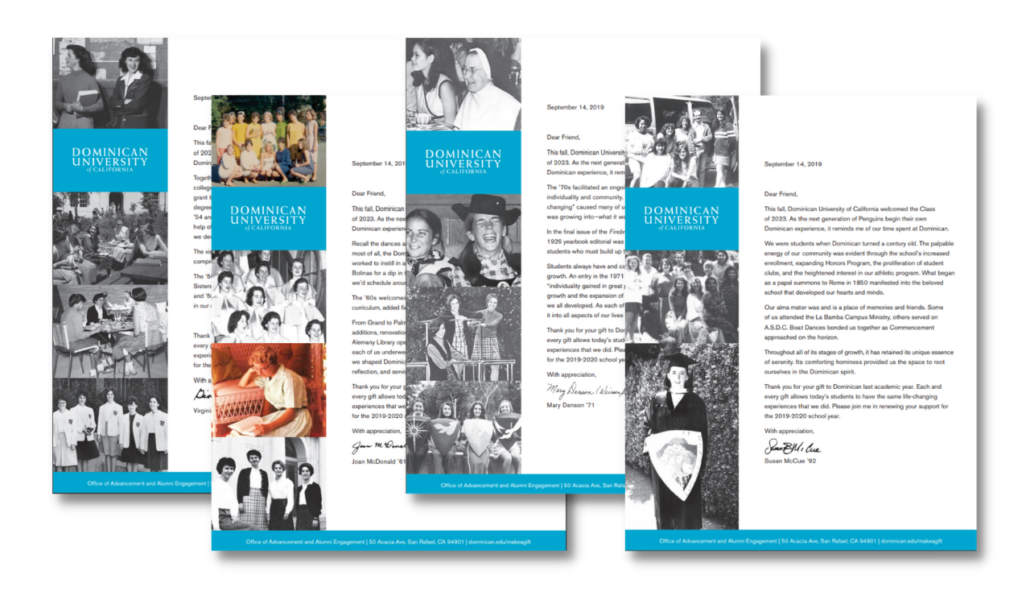
The Dominican University of California saw a 4.78% open rate and achieved an 8% increase in the number of donors.
Turning Data into Action
Variable Data Printing is not new. But it may be new to you. And at BCG Connect, we work with your data and recommend ways in which you can use VDP.
In the long run, our creative team designs appeals that create a connection between you and your donor.
Did your last appeal deliver on your goals? Have you tried VDP beyond personalization?
If you have the data, we have the strategy, programming and support to allow Variable Data Printing to optimize your next direct mail appeal.
Want to see more?
So, are you looking for ideas for your next appeal? Ask us for a sample, and you’ll get it directly to your inbox.


